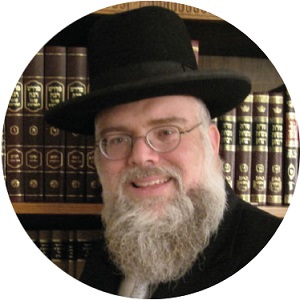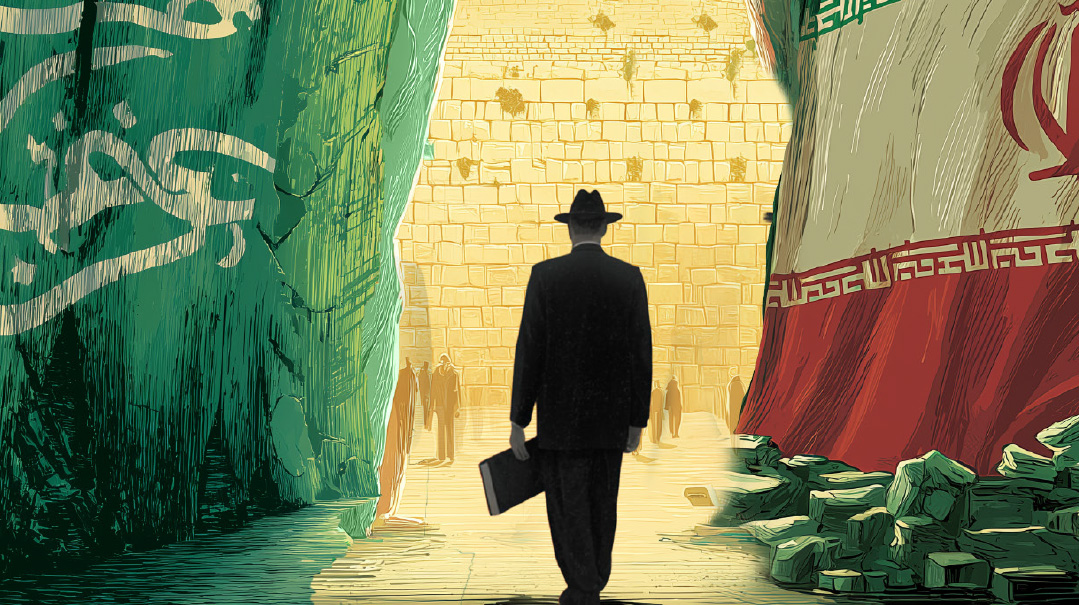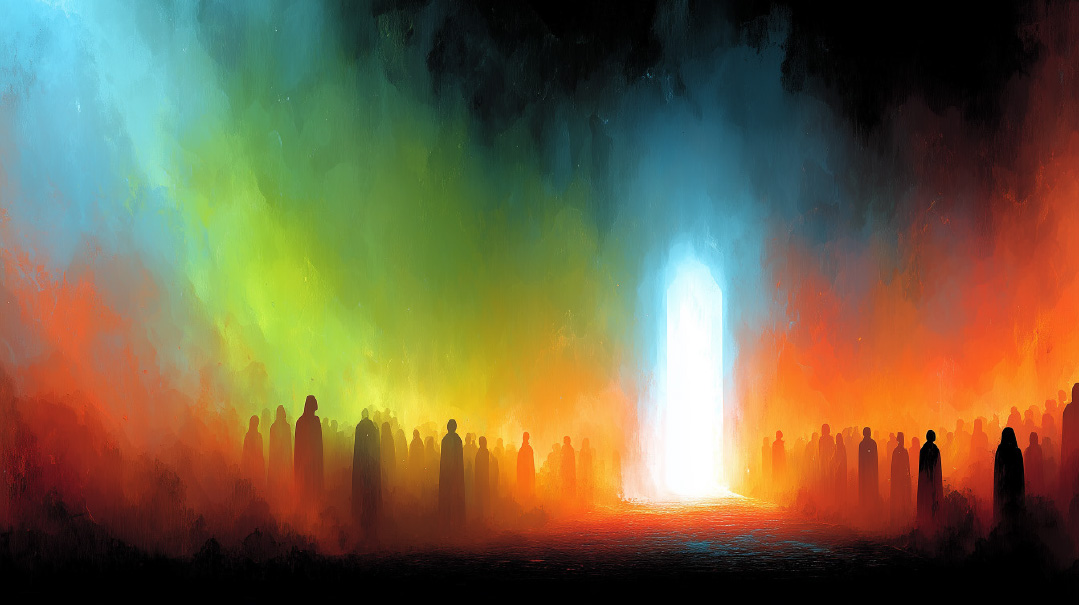Get Excited about the Exodus

Did Chazal give us a clue as to how to reach this lofty level of envisioning ourselves as the Yotzei Mitzrayim?

A
irplane trips often provide experiences that are fodder for good stories. Two such experiences that happened to me years ago offer some food for thought as we approach Shabbos Hagadol and Pesach.
The first incident happened long enough ago that I cannot recall the circumstances of my trip. I was flying somewhere to give a speech — I cannot recall where, or what it was about. Instead of schlepping seforim, I brought along copies of the various sources I needed to review for quoting in the drashah.
A very dignified and respectful einah-Yehudis was looking on and noticed that the text I was reading was something other than English, and that I was rapidly scribbling notes from right to left. She asked what I was doing. I explained that I was about to give a speech to a Jewish crowd, and I was reviewing my material. She inquired if I did this often, to which I replied in the affirmative.
Her next comment — to paraphrase the words of the Gemara, “nichnesu k’eres b’libi” — stung my heart. “So you mean your job is to get people to work on themselves? When do you work on yourself?”
I can’t recall anybody having said something like that to me before — or since, for that matter. A powerful piece of mussar like that should never be ignored, no matter its source. Indeed, didn’t Chazal instruct us, “Adorn yourself (first) and then adorn others”? I had to admit to myself, I had a ways to go.
Of all the challenges and opportunities that the Yom Tov of Pesach presents, the most difficult of all, said the Alter of Kelm, is Chazal’s mandate of “chayav adam lir’os es atzmo” — the obligation to envision oneself as if he had actually left Mitzrayim. How is that even possible, let alone obligatory? Although the great ones among us — notably Rav Chatzkel Levenstein ztz”l in Ponevezh — would regularly set up benches in a shiur room and dance through them as a reenactment of Yetzias Mitzrayim, that can hardly be expected of the vast majority of the population.
(Rav Chatzkel did indeed tell the legendary masmid, Rav Chaim’ke Berman, “If you ever expect to become anything great, you must also perform Yetzias Mitzrayim.” I was personally told this when I spotted Rav Chaim’ke in the wee hours of a Leil Shabbos, his countenance shining with an otherworldly glow. I asked him what was up, to which he responded, “I was just in Mitzrayim!” and proceeded to share Rav Chatzkel’s mandate. Apparently, there are some individuals who can do it.)
Thankfully, the Rambam seems to have rescued us by quoting a different version of the Mishnah, as he writes in the seventh perek of Hilchos Chometz U’matzah: “One is obligated to display a behavior [l’har’os es atzmo — to show himself, rather than lir’os es atzmo, to see himself] as if he has just left the slavery of Mitzrayim.” The Rambam goes on to explain that this is the underlying reason for drinking four cups of wine, leaning, and other displays of freedom at the Seder. According to this, the Mishnah never expected all of Klal Yisrael to reach the level of Rav Chatzkel or those in his league. We are only required to demonstrate, through the way we commemorate it, our belief that the geulah from Mitzrayim took place on this night.
The Netziv offers a different approach that can also put us at ease, to some extent; but it, too, comes with a mandate. The word that the Mishnah uses to describe this mitzvah of envisioning Yetzias Mitzrayim, “chayav,” does not mean “obligated” in the way we would normally use it. We find other places in Shas where the word chayav refers to a level we should aspire to reach, but one that is not mandatory in nature.
One example is Chazal’s dictum that one is obligated to say, “When will my deeds reach those of my forefathers Avraham, Yitzchak, and Yaakov”? Certainly, this is not an obligation akin to wearing tefillin or keeping Shabbos. It is something we should strive to attain and view as a standard for what we want to accomplish in life.
Similarly, Chazal instructed us to say “Bishvili nivra ha’olam — the world was created for me.” Although there are varying interpretations of what Chazal were mandating by this, one thing is clear. We don’t observe any of our fellow Yidden making it a point to state that they have not yet reached the lofty level of the Avos, or declaring out loud that the world was created only for them. Rather, these are madreigos that we aspire to, but they are by no means mandatory.
Here too, says the Netziv, Chazal were not demanding a mitzvah that most of us are incapable of fulfilling; rather they were encouraging us to aspire to greatness by envisioning the actual exodus from Mitzrayim and the accompanying nissim and nifla’os that we experienced as a nation. This will make us greater people and more serious servants of Hashem. It was left up to each individual to rise to the occasion as high as his individual abilities will take him.
But how can we get there? Did Chazal give us a clue as to how to reach this lofty level of envisioning ourselves as the Yotzei Mitzrayim?
Let’s return to the friendly skies. It was 1988, and I was traveling to my niece’s wedding in New York. I boarded the plane at O’Hare Airport in Chicago and found my aisle seat next to a friendly gentleman who was eager to make conversation. He was en route from Los Angeles after having attended a World Series game for the ages, with the winning team’s star player hitting a home run in the bottom of the ninth inning to secure victory.
Our conversation would have to revolve around something other than Bava Metzia, which is what I was learning at the time. I asked him where he was coming from, and was immediately informed of his great zechus of having been at this game for the ages. There happened to be a true Midwest thunderstorm raging at that moment, supplying lots of lightning for our visual pleasure. We would not be going anywhere anytime soon. To be exact, for five hours! Meanwhile, I was treated to a blow-by-blow account of the home run heard around the world.
Full disclosure: I know a thing or two about baseball and could certainly hold up my end of a conversation about how one hits the ball with a bat. But not for five hours. I was being regaled with every dreidel and pitchivke (pun intended) about the at bat, how the hitter was up against the wall in the pitch count and playing on a bad leg to boot. I was to discover what kind of pitch it was, how close he was to being struck out, and every trivial narishkeit associated with this feat.
Thankfully, we finally took off, and I made it to the wedding for the middle of the second dance. (No sooner had I walked in than Rav Shmuel Kamenetsky shlita commanded me to immediately go over to my worrying mother and announce my safe arrival.)
After returning home, I had an epiphany that gave me an insight into, of all things, our ability to feel as if we had gone out of Mitzrayim. What had compelled my seatmate to carry on for so long about one single home run, with more detail than one would ever think possible?
First of all, this was obviously very important to him. He was a Dodgers fan, and he had witnessed history. And relating every detail of what he saw was his way of reliving the event. It mattered not that I had already had my fill of the tale many hours prior; to him, it was a life-altering experience, and the more he delved into the blessed play, the more fulfilled he felt. And by the time he was done, I could practically smell the popcorn in the stadium and hear the roar of the crowd. His exuberance, as well as his gift for detail, put me right in Dodger Stadium — although I would much rather have been under a chuppah in Staten Island.
L’havdil, let us take a look at our Pesach Seder. The Rambam makes a point of telling us that the featured portion of Maggid is the parshah of “Arami oved avi” — the same pesukim we recite when bringing our bikkurim to Yerushalayim, which give a quick overview of our history and the exodus from Mitzrayim. The Rambam exhorts us to elaborate on the pesukim and speak about the miracles and wonders that we experienced as a nation as we left Mitzrayim, as well as the ten Makkos we saw while we were still there. V’chol hamarbeh, harei zeh meshubach.
We are also instructed to express our appreciation and to praise Hashem for all His kindnesses as we delineate them one-by-one in Dayeinu. The Rambam also instructs us to be very animated when we relate the story to our children, pointing out to them that we were slaves just like the slaves that our children see with their own eyes.
I am told that in the home of my wife’s grandfather, Rabbi Yehoshua Sperka ztz”l of Detroit, he would emphasize that he knew this all to be true because he had heard it from his father, who heard it from his own father, and on and on, all the way back to the ancestor to whom it happened. Did this not cement the emunah in the Makkos and Yetzias Mitzrayim in his descendants’ collective consciousness for generations? I can vouch that it did.
It is all a matter of how the leader of the Seder shows his excitement, unwavering belief, and attention to detail that brings the assembled to feel the droplets of the Yam Suf on their skin as they sing the Hallel at the Seder. The more our children feel we were there, the more they will know they were there too — as the Gemara instructs us to declare, “V’osanu hotzi misham.”
The actual mitzvah of sippur Yetzias Mitzrayim is enhanced to the degree one provides detail and perspective — the more, the better. It offers him a greater opportunity to personally reexperience the excitement and the reality of the event, and not merely relate a history lesson. This is why even if we were all wise, kulanu chachamim, we would nevertheless have a mitzvah to talk about it again and again. We are not recounting Yetzias Mitzrayim, we are living and breathing it.
This does indeed put a great burden and responsibility on the baal haSeder. His job is not just to incorporate the feeling of leaving Mitzrayim himself; he also bears the holy task of relating it to his own children or whomever else may be attending his Seder.
This insight could help us understand the very structure of the Haggadah a little bit better. This mandate, “In every generation a person is obligated to envision himself as if he went out of Mitzrayim,” is recited all the way at the end of Maggid. If, indeed, we have a goal to feel as if we ourselves left Mitzrayim, should this not be stated right at the beginning of the Seder, so we will know what we should aim for? By the time we say this, the Seder is as good as over!
Perhaps the answer is that if we said it at the outset, it would be an exercise in futility. How are we going to intellectually or emotionally feel that we left Mitzrayim, before going through the Haggadah and reading and expounding on all the miracles that it teaches us? Merely reciting this sentence would not do anything to help our cause, because we have nothing to excite the senses or stimulate our emotions.
It is only after we have read the incredible adventure that was Yetzias Mitzrayim that we can even begin to talk about feeling as if we had gone through it ourselves. We need to hear the details, we need to feel the simchah, and we need to see our father or Seder leader so enraptured by the story that we can connect on our own level and feel it ourselves.
This is not an intellectual experience; we know the story. The Jews were in exile, and Hashem took us out. The Seder is not here to tell us old news. What it is here for is to make it part of our very being, and something we walk around with every day in our hearts, not just in our heads. That requires absorbing what the Haggadah is saying and what the baal haSeder is demonstrating. It is a holy calling and an incredible and unmatched privilege. No baal haSeder should ever take it lightly.
As Pesach is fast approaching, it is time to think about how to capitalize on the avodas hayom and make the most out of our Seder, and — to borrow from the vernacular — to hit it out of the park. And as my first fellow passenger reminded me, before we invest all the work in everyone else, let’s work on ourselves so that our absolute emunah in Yetzias Mitzrayim comes shining through to the point that everyone at our table will truly feel they were there.
Rav Ben Tzion Abba Shaul, in his sefer Ohr L’Tzion, points out that the Shulchan Aruch dedicated a special siman (chapter), albeit only one sentence long, to Shabbos Hagadol, and how it got its name. In some communities, they even incorporated Shabbos Hagadol into the regular Shabbos greeting. The Rema adds that many are accustomed to say the Maggid portion of the Haggadah on Shabbos Hagadol, for the miracle of geulah began then.
Apparently, this Shabbos carries tremendous significance and is not simply the Shabbos before Pesach. Let us use it to make our own preparations for what we will im yirtzeh Hashem finally celebrate in real life as our own geulah sheleimah b’karov.
Rabbi Plotnik, a talmid of the yeshivos of Philadelphia and Ponovezh, has been active in rabbanus and chinuch for 25 years and currently serves as ram in Yeshivas Me’or HaTorah in Chicago.
(Originally featured in Mishpacha, Issue 1007)
Oops! We could not locate your form.






